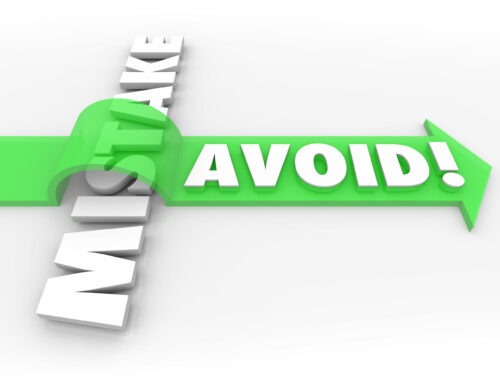 Your most precious resource is time.
Your most precious resource is time.
If you had more time, you could get more done – right?
More time to get organized.
More time to plan.
More time to respond to emails and voicemails.
More time to THINK and not rush through everything.
The problem is that time is a limited resource.
We each get 24 hours in the day. No more.
How you spend it is up to you.
Chances are good that you’ve got time leaks – places where you’re losing or wasting time – and you may not even be aware of it.
If you can plug some of those leaks, you can reclaim time that you can use for more productive activities, like generating revenue for your nonprofit.
Here are 7 common nonprofit time leaks that might be slowing you down and keeping you from being efficient.
1. Email
Email is a convenient way to communicate, and we’re drowning in it.
Your inbox is full of other peoples’ agendas – their requests for info, their assignments for you, their FYIs.
And all those little dings and visual notifications of new messages are interruptions and can cause you to spend 500 times as long to get things done. Talk about a time suck!

Most of us try to respond to email throughout the day, and it’s a big mistake.
So, here’s a better way to manage email: Keep it closed instead of opened during most of the day.
Check it first thing in the morning. Then, close it while you work so you’re not interrupted.
Check it after lunch. Then, close it for the afternoon.
Check it at the end of the day. Then, close it up (and leave it closed) until you return to work the next morning.
When your volunteers, donors, and Board members figure out that you answer emails anytime of the day or night, they start to expect it.
You need better boundaries than that.
Also, make your email work for you by using folders to organize your inbox.
Create a folder for each project you’re working on, and move emails in there when they’re complete. That way, the only messages that are in your inbox need your attention. Then work on those on your schedule, not theirs.
2. Social media

It’s a great way to connect with donors and volunteers, and it can also be a huge time suck.
Lots of people jump into social media platforms because they’re the latest, greatest thing.
But they may not be adding a THING to your bottom line.
Do you REALLY need that TikTok account if nothing is happening there and all your followers are hanging out on Facebook?
Do you REALLY need that Instagram account if you have no plan for monetizing it?
One way to get the most from social media is to purposefully choose the best platform(s) for your nonprofit to use so you’re not wasting time on those that’ll bear no fruit for you.
Then, create a plan for posting so you know exactly what to post and when to do it.
That’ll keep you from coming up with something in the moment, which leads to wasting time poking around, or worse, posting nothing at all.
Cultivate the self-discipline to get in and get out when you’re posting.
Don’t linger, play games, or watch the latest cat videos.
You can fool around on Facebook on your own time.
3. Unproductive meetings
Most of the meetings you attend have some amount of wasted time. But some meetings you attend don’t need to happen at all.
Meetings should be used to brainstorm, make decisions, discuss issues (and ideally come to a conclusion), give/receive updates, make assignments, and ensure communication.
 Next time you’re thinking about holding a meeting, ask yourself if you REALLY need the meeting or if an email will suffice.
Next time you’re thinking about holding a meeting, ask yourself if you REALLY need the meeting or if an email will suffice.
If you must have a meeting, here are some things you can do to make it more efficient and more productive:
- Start by creating an agenda of no more than 3 important items for the meeting. Limiting the agenda will give you time to adequately cover each topic and keep the meeting focused.
- Determine how long the meeting will be. Aim for 30-60 minutes for things like one-on-ones and team meetings. Planning meetings might take longer.
- Let participants know ahead of time what those 3 agenda items are so they can be prepared for productive conversation – and let them know how long the meeting will last.
- If, during the meeting, people take the conversation down “bunny trails” or tangents, ask them to finish the conversation outside of the meeting so it doesn’t waste everyone’s time.
- Keep notes of decisions made, action items, and topics for any future meetings. Tools like Zoom’s AI Companion or Otter.ai can help with automatic note taking.
- Share action items with all participants afterward so they have in writing what they said they would do.
- Start on time and end on time. Your participants will love and appreciate you for it!
Want to have better Board meetings? Read here for ways to keep yours yawn free and productive.
4. Putting out fires
It’s tough when you’re the Lone Ranger for your nonprofit.
You’re basically doing everything yourself and dealing with every issue that pops up.
This is a common problem for leaders of new, young, and small nonprofits, and it severely limits productivity.
When you spend all your time putting out fires, you stay in crisis mode – which isn’t healthy for your body or mind.
You’re always reacting, leaving you no time to think or plan because the emergency in front of you demands your time and attention.
You also can’t work on reaching your goals because you’re dealing with the crisis du jour.

The solution to this problem isn’t easy, but it’s critical to your success and sanity:
Get ahead of the crises, and put the people and systems in place to prevent crisis from occurring.
To do this, create the team you need so you’re no longer the Lone Ranger.
Hire staff, outsource tasks, and/or recruit volunteers. There are lots of ways to get help, so choose the one that’ll work for you and get started.
Then, start creating systems so others can accomplish tasks in your organization without your assistance or supervision.
Systems ensure that no matter who is using the system, you get the same result every time.
It takes time to get a team and systems in place initially, but it’s well worth it in the long run.
And it also takes you out of the position of firefighter so you can do things that only you can do (or need to do).
5. Whacked priorities
One common productivity problem that faces many directors of small nonprofits is focusing on the wrong thing.
They’re spending time on things that don’t generate enough return on the investment of time, energy, and money, which means they’re constantly trying to find the next “good idea” for raising money.
In practical terms, they’re doing too many “fundraisers” instead of focusing on building their donor base.
Those fundraisers just aren’t generating the kind of money directors need, and often leave the directors frustrated because they worked so hard for just a little bit of money.
Is this you?
You may be so focused on the money that you ignore the donor relationship.
If you know the story of the goose that laid the golden egg, you know that as long as you take care of the goose, it keeps laying the golden eggs.
Ignore or starve the goose, and the golden eggs stop coming.
It’s the same with donors.
Take really good care of your donors, and they keep giving.
Get too focused on the money, and donors start to feel like a number in your database – and that’s when they stop giving.
Instead, put your donors at the top of your priority list.
Growing your donor base and retaining as many donors as possible should be top priority for you.
In addition to paying attention to your donors, watch what kind of fundraising you do.
If all your fundraising is transactional in nature, you’ll always be on the fundraiser hamster wheel – living from one fundraiser to the next.
So, stop doing soooo many fundraisers.
If your nonprofit is less than 3 years old, don’t worry about grants just yet either.
Instead, find ways to acquire new donors and increase your retention rate. That’s where true sustainability lies.
6. Control freak
Lots of us who are entrepreneurial and start a new nonprofit or business want things done a certain way.
And it’s really tough for us to turn over important tasks to others because we think they won’t do things well enough to satisfy us.
The tough thing is that if you don’t learn to delegate, you’ll never grow your new organization… because you can’t do everything yourself.

The trick is to surround yourself with people who understand your standards and are willing to work beside you to maintain them.
That means you need the right staff, volunteers, interns, or contractors on your team.
And you need to train them so that they know what you expect of them.
Then, your job is to get out of their way so they can work.
Give them the support and tools they need and empower them to make decisions within their area of responsibility.
Have weekly check-in meetings so they know they have a regular chance to talk with you and you can stay apprised of their progress.
Sometimes, you might realize you have the wrong people on your team.
If so, do yourself a favor and let them go. FAST.
Hanging on to someone who is a bad fit will not only slow you down as an organization but will suck a lot of your time managing them.
7. Working below the line
If you’re trying to do it ALL in your small shop, you’ll fail.
You can’t.
No one can, no matter how hard they try.
Instead of trying to do everything, focus on doing only those things that YOU can do in the organization.
Then automate, delegate, and delete everything else.
Watch this short video where I explain the concept of “working above the line”:
Working in your unique brilliance – as I talked about in the video above – and staying above the line is way more fun than doing the stuff below the line that drags you down and zaps your energy.
You’re more productive above the line because you’re doing work you’re good at it, resulting in higher quality and faster turnaround.
Ultimately, you’re happier and more successful, which means increased results for your organization.
Experiment: Try a Time Study
If you’re looking for one of the most effective ways to figure out your nonprofit time leaks, try a time study. Here’s a super simple way to do that.
For two weeks, write down everything you do and how long each task takes.
I mean EVERYTHING.
This time tracking doesn’t need to be fancy.
You can use pencil and paper, an Excel spreadsheet or Google Sheet, or an online tool like Clockify which lets you click ‘Start’ and ‘Stop’ every time you begin or end an activity.
Yes, it takes a little time initially to remember to record your time, but what you’ll learn about how you work is invaluable.
Once those two weeks are up and you review everything, chances are really good that you’ll see very quickly where you’re spending time doing things that just don’t bring the results you want.
Also, you’ll probably notice a lot of your time leaks are done out of habit, and the good news about that is once you find them, you can change them.
Personally, I usually resist doing a time study, but the way I get myself to do it is to imagine that I’m being paid for every single minute I spend working – and that I need an accurate list of tasks and time to submit a correct invoice. That helps me remember to document what I’m doing.
One of the most important things my last time study showed me is that almost everything I was doing was taking me longer than I thought I’d need to do it – which explained why I could hardly finish my tasks for the day.
All in all, doing time studies have helped me be more purposeful about how I spend my working time, and I’ve (mostly) stopped doing things that aren’t productive.
What do you think a time study would show YOU?
The Bottom Line
If your most precious resource is time, it makes sense to eliminate as many nonprofit time leaks (and time sucks) as possible.
It also makes sense to carefully guard your time.
That means you need to say ‘no.’ A lot.
That may be hard for you, but trust me – you’ll get good at it, and your productivity will show it.





[…] especially in your organization’s first year. There is so much to do all the time! You will need time management and organization tools and strategies. You will learn to accept that you cannot do it all. But, […]